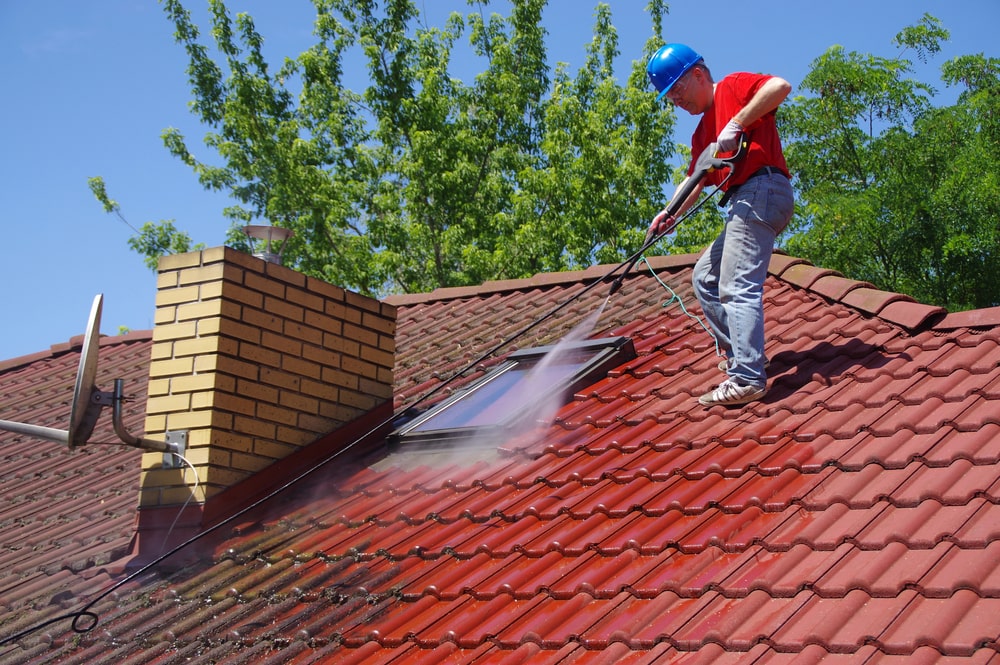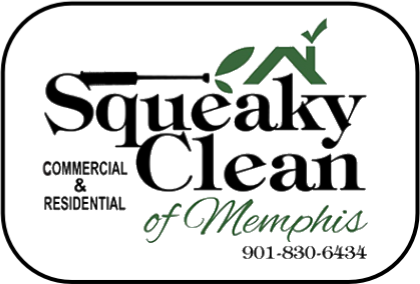
Have you considered the importance of maintaining your roof’s integrity by pressure washing? Regular cleaning can significantly prolong the lifespan of your roof.
Proper pressure washing can prevent costly repairs.
In this guide, we’ll cover the essential steps and expert tips for pressure washing your roof, ensuring you achieve a clean and debris-free surface.
Assess Roof Condition
Before embarking on roof pressure washing, a thorough roof assessment is imperative. Identifying any existing damage, such as cracked tiles or loose shingles, is crucial to prevent exacerbating the problem during cleaning.
A comprehensive visual inspection of the roof should be conducted, ideally on a “clear day.” This enables you to gain a clear view of potential issues, ensuring that no roof surface remains unchecked. In some cases, the involvement of a professional roof inspector can add an extra layer of safety and precision to your roof evaluation process.
Check for Damages
Before you begin pressure washing, it is critical to thoroughly inspect your roof for any signs of damage. Cracked tiles, loose shingles, and damaged flashing are common issues.
Once identified, these problems should be promptly repaired to prevent further damage from pressure washing. Ignoring these issues can exacerbate existing damage and lead to costly repairs.
Unaddressed roof damage can severely diminish the efficiency of your home’s insulation.
A meticulous inspection involves examining all areas of the roof, including valleys, edges, and areas around penetrations like chimneys or vents. Engaging a professional for this task ensures that nothing is overlooked and the roof is in optimal condition for pressure washing.
Identify Roof Material
Correctly identifying your roof material is essential for selecting the appropriate pressure-washing method and cleaning solutions.
- Determine PSI (Pounds per Square Inch): For residential roofs, a pressure washer with a PSI range of 1,200 to 2,000 is ideal.
- Check GPM (Gallons per Minute): Aim for a GPM of 1.4 to 2.8 for efficient cleaning without overwhelming the roof surface.
- Adjustable Settings: Opt for a pressure washer that allows for adjustable pressure settings to cater to different roof materials.
- Nozzle Selection: Use a wide-angle nozzle (25 or 40 degrees) to disperse the pressure evenly and reduce the risk of damage.
- Gas vs. Electric: Gas pressure washers offer more power but are louder, while electric ones are quieter and easier to maintain.
Selecting a washer with these specifications helps safeguard your roof while maintaining cleaning efficiency.
By considering these factors, you ensure the longevity of your roof and prevent unnecessary damage.
A well-chosen pressure washer translates to a cleaner, longer-lasting roof.
Use Safety Gear
When pressure washing a roof, using appropriate safety gear is non-negotiable to prevent injuries and accidents.
Given the elevation and the wet conditions involved, securing a firm footing is paramount. Non-slip boots or shoes provide the necessary grip on the roof surface, reducing the risk of slips.
Furthermore, a safety harness attached to a stable anchor point ensures that any missteps do not result in a dangerous fall. Ensure the harness is durable and properly fitted before beginning the job.
Eye protection, such as safety goggles, is crucial to shield your eyes from debris and high-pressure spray. Additionally, wearing gloves can protect your hands from harsh cleaning agents and abrasive surfaces.
Prioritizing safety gear not only protects you from potential hazards but also ensures a more efficient and focused cleaning process.
Washing Techniques
Selecting the right washing technique is pivotal to maintaining the integrity of your roof. The two primary methods include soft washing and high-pressure washing, each tailored to different roofing materials and conditions.
Soft washing employs low-pressure water combined with specialized cleaning solutions to remove dirt. High-pressure washing, on the other hand, uses pressurized water to eliminate stubborn grime.
Apply Detergent
Applying detergent to your roof assists in breaking down organic growth and stubborn stains, making the cleaning process more efficient.
- Prepare the Detergent: Mix the roof-cleaning detergent according to the manufacturer’s instructions.
- Check the Weather: Ensure there will be no rain for at least 48 hours after application.
- Apply Evenly: Using a garden sprayer or a soft-wash system, apply the detergent uniformly across the roof surface.
- Allow to Sit: Let the detergent sit for the recommended dwell time, usually around 15-30 minutes.
- Rinse Thoroughly: After the dwell time, rinse the roof thoroughly with low-pressure water.
Proper detergent application is crucial for loosening moss, algae, and lichen from the roof surface.
Make sure to use a detergent that is safe for your specific roof material to avoid any damage.
Avoid letting the detergent dry completely on the roof, as it could lead to staining or inadequate cleaning.
Correct Pressure Settings
Choosing the correct pressure settings is essential for safely cleaning your roof without causing damage.
Typically, it is recommended to use a pressure setting between 1000 to 1500 PSI for roof cleaning, depending on your roof material. Lower pressure settings are adviceable for delicate materials such as shingles, ensuring you avoid the risk of stripping granules off the surface that protect against UV rays and weather elements.
Higher pressure settings should be avoided to prevent potential damage to both the roofing material and the underlying structure. It’s crucial to consistently monitor the pressure gauge and adjust settings as required throughout the cleaning process to maintain optimum pressure.
For homeowners, utilizing adjustable pressure washers or those with specific roof-cleaning attachments can provide greater control. This ensures that the pressure remains suitable for different areas of the roof, thereby preventing possible water infiltration and maintaining the structural integrity of your roofing system.
Post-Wash Maintenance
After pressure washing your roof, a thorough inspection is paramount to identify any potential issues. Examine areas where shingles may have loosened, ensuring they are promptly resecured to prevent future damage.
Additionally, cleaning out gutters of any debris is essential. This prevents water buildup that could lead to roof leaks or structural issues. If applied, consider a protective sealant to enhance longevity, particularly against mold and algae recurrence. Regularly monitor the roof post-cleaning to address minor repairs swiftly, maintaining its structural soundness.
Inspect for Residue
After finishing the pressure washing, check the roof surface for any remaining residue. This is essential for ensuring the roof is clean and free from contaminants that can damage it.
Begin by examining the roof under good lighting conditions. Look for any signs of algae, mold, or dirt that might have been missed. Residual residue can harbor moisture, leading to long-term issues.
Use a soft-bristle brush or a similar tool for closer inspection in intricate areas. This helps to identify smaller and harder-to-see patches. Cleaning these spots can prevent future staining and deterioration.
Be particularly diligent around flashing and vent areas. These zones often accumulate more residue due to their crevices and can become centers for mold growth. Ensuring they are thoroughly clean is crucial.
Checking for residue is a meticulous task but essential. It guarantees that the pressure washing process has been effective.
Gutter Cleaning
Gutter cleaning is an integral part of roof maintenance. Ensuring clean gutters helps prevent water damage and roof deterioration. Regularly scheduled cleaning reduces the likelihood of blockages that can cause overflows.
Ideally, cleaning should be carried out at least twice a year.
Start by removing large debris such as leaves and twigs using gloved hands. Follow up by flushing the gutters with a hose to wash away smaller particles.
Pay close attention to downspouts as these can easily become clogged. A blocked downspout prevents proper drainage, leading to water pooling on the roof.
To prevent future blockages, consider installing gutter guards. Gutter guards significantly reduce the amount of debris entering the system, making maintenance easier. Use high-quality materials for better durability.
Lastly, ensure all safety precautions are in place. This may include using a stable ladder, wearing protective gear, and working with a partner for added security. Regular gutter maintenance contributes significantly to prolonging the lifespan of your roof.
Benefits of Hiring a Pro
Hiring a professional for pressure washing your roof ensures meticulous and thorough cleaning, preserving the roof’s longevity and aesthetic appeal.
Professionals like Squeaky Clean of Memphis possess the expertise to identify potential issues quickly.
They are equipped with advanced tools and eco-friendly cleaning solutions that guarantee a safe and effective cleaning process without any damage.
Furthermore, hiring experts eliminates the risk of injury associated with climbing and operating pressure washing equipment. By entrusting this task to skilled technicians, you benefit from comprehensive cleaning, early problem detection, and enhanced roof durability. This professional assistance not only protects your investment but also provides peace of mind.
In conclusion, pressure washing a roof is a vital maintenance practice to ensure its longevity and structural integrity. By following the steps outlined in this guide, homeowners in Memphis can effectively clean their roofs, removing debris, moss, and other contaminants that could potentially cause damage.
Starting with a thorough inspection to identify any pre-existing damage and determining the correct materials and equipment is crucial. Utilizing appropriate safety gear and applying the right washing techniques help avoid harm to both the roof and the individual performing the cleaning. Post-wash maintenance, including residue inspection and gutter cleaning, further safeguards the roof from future issues.
While DIY pressure washing is feasible, hiring a professional can provide added benefits such as expertise, advanced tools, and enhanced safety. Professionals can identify and rectify potential issues swiftly, ensuring a thorough and damage-free cleaning process. Whether opting for a DIY approach or seeking professional help, maintaining your roof through regular pressure washing is essential for its durability and overall health.
